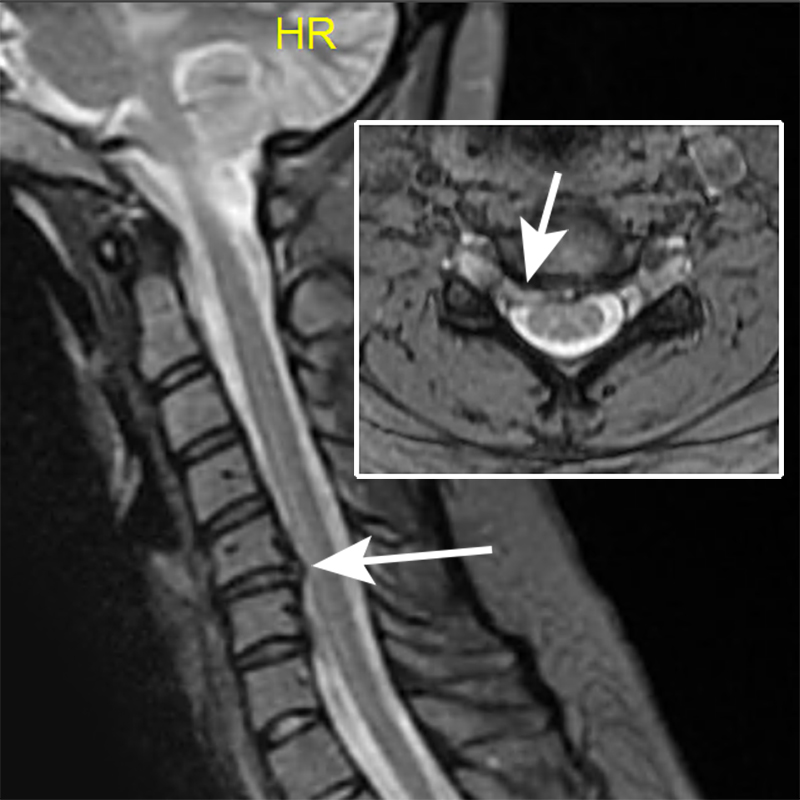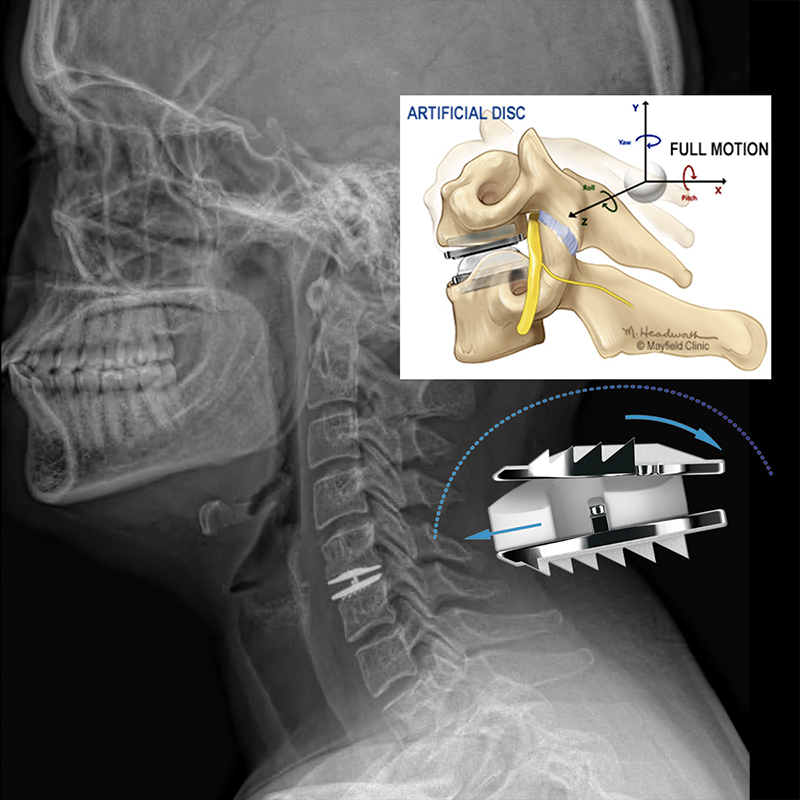
Emily’s story
Artificial disc replacement
Artificial disc replacement proves to be best option for Emily
When it came to the pain shooting down her right arm, Emily just wanted a doctor who would listen to her.
She was not yet 30 years old, with an active workout routine and social life. An attorney, she spent plenty of time on her feet. An avid reader, she always had a book in her hand – a difficult task as the numbness extended to her fingers. Many times, she would come home after work and have to lay flat on her back.
“I couldn’t carry anything,” she said. “It was like I didn’t have any muscles in my arm.”
Dr. Bryan Krueger, a neurosurgeon at Mayfield Brain & Spine, diagnosed Emily with a herniated cervical disc at the C6-C7 levels at the base of her neck. A herniated disc occurs when the rubber-like center of a spinal disc ruptures through a weak area in the tough outer wall. That was causing radiculopathy, radiating symptoms such as pain or tingling, resulting from irritation to the nerves as they exit the spinal cord.
“The pain shooting down Emily’s arm clearly signaled that the nerve roots were irritated,” Dr. Krueger said. “The fact that she was losing strength for basic activities showed that her condition was progressing and she was at risk of permanent deficits. We needed to relieve the pressure that the disc was putting on that nerve.”
He gave Emily some options: Conservative treatment including physical therapy or pain injections, different types of surgery to remove the disc and fuse the vertebrae together, or replacing the herniated disc with an artificial disc.
“As a logical person who kind of lawyerizes her own health, it really helped me that he walked through the options,” she said.
Dr. Krueger said Emily’s symptoms had progressed past the point where conservative treatment would provide sustained relief. He recommended surgery. For many patients, fusion surgery might be the best option. He also told Emily about another surgical option: replacing the herniated disc in the spine with an artificial device that moves like a natural disc, a procedure called arthroplasty.

Emily with Dr. Krueger
While many patients might be better candidates for fusion surgery, Emily was excited to hear about the artificial disc option. Both her parents had gone through fusion surgery, and she preferred to go another direction.


“I was excited that he was recommending an artificial disc replacement,” she said of Dr. Krueger. “Because I had no other back issues, and with my age and activity level, I would be a perfect candidate.”
Dr. Krueger said Emily wanted information about all of the options.
“Research on artificial disc replacement shows that it can reduce the chances of future stress on adjacent levels of the spine,” he said. “Emily was determined to get back to her busy and active life. Because she was young and otherwise healthy, we felt she would benefit greatly from the arthroplasty.”
Emily chose to have the artificial disc surgery in an outpatient procedure at the Mayfield Spine Surgery Center in Norwood. At home the next day, the pain shooting down her arm was gone. It wasn’t very long before she was back to the activity level she had before the pain started.
“Almost immediately, I could hold a book again,” she said. “I could tell that I had been fixed.”
~ Cliff Peale
Hope Story Disclaimer -"Emily's Story" is about one patient's health-care experience. Please bear in mind that because every patient is unique, individual patients may respond to treatment in different ways. Results are influenced by many factors and may vary from patient to patient.

